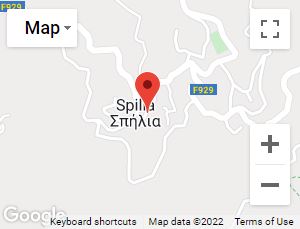Panagia Chrysokourdaliotissa
It is located at the village of Kourdali. It is the most ancient monument of the community of Spilia-Kourdali. It was built in the 16th century by deacon Ioannis Kourdalis. It was the church of a Monastery which no longer exists. The church is dedicated to the Assumption of Virgin Mary and therefore celebrates on the 15th of August. The ancient Monastery has been re-established since 2006 as a women’s Monastery. The first nun, sister Isidora is already living in it. Telephone 22922212 or 99770592.
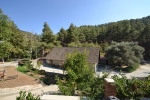
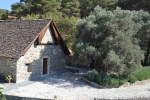
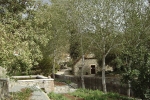
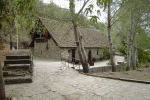
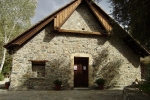
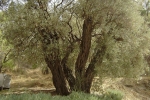
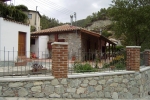

Holy church of Agios Antonios (old)
The old church of Agios Antonios is stone-built, single-roomed with stone made arches supporting a wooden roof. The church was built in around 1850. The icons of the chancel are representative samples of the art of the Cornaro School which dominated the 19th century. The bema-doors were made in the 16th century and they are of exceptional art.
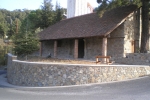
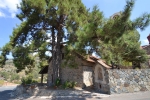
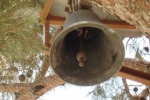
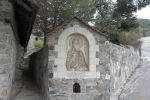
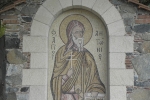
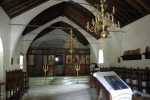
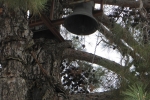
Holy church of Agios Antonios (new)
It is situated on a hill which overhangs the community of Spilia. Situated next to it, is the old church dedicated to the same saint. The construction of the new church was accomplished after a fight was given by a small poor community whose faith made it daring. Let’s observe it.
On the 15th of August 1944, Clearchos Kyriakides put on a stage at Spilia the drama “Pavlos Melas”. A lot of people gathered to watch the performance. The local land authorities and the ecclesiastical authorities were present as well as a representative of the Kyrenia Bishopric. After the performance, the ever-remembered Clearchos explained the need for establishing a new church of Agios Antonios. Instantly, a “Construction Committee” was appointed, having as president the parish-priest of the community Mr. Ioannis Matthaios, Clearchos Kyriakides as secretary and Michael Neophytou as cashier.
The committee started work. In about 1948, Clearchos withdrew and the businessmen Ioannis Schizas and Miltiades Charalambous consecutively undertook to continue the work of fund raising. Things were moving with very slow steps due to the E.O.K.A. fight. In 1957, Clearchos Kyriakides was persuaded by the new priest Father Papademetris Demetriades to come back to the committee. Clearchos got into raising the necessary funds for the construction of the church with immoderate zeal. He knocked every single door and literally ploughed the entire Cyprus. In 1960, the plans were ready, the money had been gathered and the contract for the construction of the church was signed. The contractor was Loizos Hadjisavvas from Akanthou.
New difficulties came up while the construction of the church was in progress. Clearchos Kyriakides retired and immigrated in England. It was then that the Turkish-Cypriot Mutiny was stormed. People gathered around their families and treasured their savings. Thus, the construction of the church seized due to shortage of money and the church was left semi-built and in the mercy of the weather conditions for four years.
In 1967, a new committee was appointed. Its members were Priest Papademetris and the President of the Community Kyriacos Alexandrou whereas Alexandros Tsaggarides, a man with prestige, connections and accounting abilities, was the cashier of the committee. Tsaggarides arranged the finances and the construction was resumed and completed in 1970.
It was a fabulous large three-roomed Basilica with a dome. It is built with the splendid stone of the mountain region of Madari, harmoniously matched with bricks from Agios Theodoros at the arches and pediments. It was the first church being built during the second half of the twentieth century in the regions of Solea and Pitsilia. The other larger and richer communities of the area were puzzled as to how a poor community had achieved such a miracle. It was the miracle of the faith of the residents of Spilia and Kourdali.
The church was furnished with offerings made by the residents and is constantly improved. Lately, it has gradually started to be adorned with iconographies. The people trust their priest, Father Kyriacos Papagiannis, and the cashier Mr. Antonis Karis and willingly respond to their call for offer. Every house in Spilia has at least a person named either Antonis or Antonia, since Agios Antonios is their protector saint and his church is their pride.
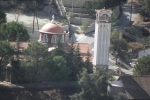
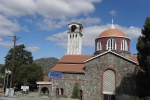
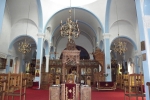
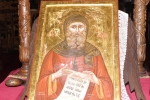
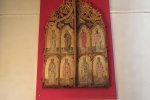
Agios Georgios (Karydiou)
It is a chapel which is situated at the location “Karydi” at the village of Spilia, next to the main road which leads to the community. It was built in 1994, having as prime mover the Cashier of the Ecclesiastical Committee, Antonis Karis. This was the vivid wish of many of the residents and expatriates of Spilia because there used to be some old church at the same location, on the ruins of which there was a mass on every Monday of Easter, approximately until 1960. A feast would then follow under the shadow of the towering walnut trees of the area. Hence, those who were nostalgic of that era pushed towards the construction of the chapel and Antonis Karis, always a sensitive receiver of the peoples’ feelings, officiated in making the dream a reality. Let’s not of course forget that Agios Georgios is the Greeks’ favourite saint. He is the one who kills the wild beast (=Arabs, Franks, Turks, English) who drink the water (= domineer) of the people.
The chapel was the church of the settlement which formerly existed in the surrounding area. Nowadays, the area is being reconstructed with beautiful country houses.
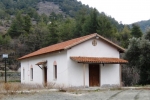
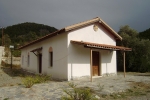
Ruined Chapels
- Agios Ioannis Prodromos
It is situated at the western bank of the river of Kourdali at the location ‘Anemourka’. - Archangel Michael
It is situated at the western bank of the river of Kourdali, on a height, at the location ‘Pyrkatis’. - Agios Georgios
It is situated at the western bank of the river of Kourdali, on a height, at the location ‘Karterouni’. - Agios Ioannis Lambadistis
It is situated at the location ‘Freritzi’, on a height. It was adorned with iconographies. - Agia Paraskevi
It is situated at the location ‘Asproi’, on the mountains, in between the villages Kourdali and Kannavia.
Monastery of Panagia Chrysokourdaliotissa
This monastery is located at Kourdali. It was established in the 16th century and has been declared as an ancient monument. We do not know when its dissolution took place, but its church, which is the largest and most picturesque one of the ancient churches of the Solea region, has been preserved. In 2006, the Holy Synod decided to re-establish this Monastery. Since the middle of 2005, the first nun has already settled at Kourdali.
A committee has been working for the re-establishment of the monastery, having members from both Solea and Pitsilia. The existing buildings have already been converted into a hospice and cell for the nun. In a remarkable way, the settling of sister Isidora in them coincided with the holiday of Agios Isidoros on the 4th of February 2007. The expansion of the monastery is planned so that it will be able to accept more sisters.
This monastery is the only living monastery in the regions of Solea and Pitsilia. Given the fact that the residents of the two regions are highly religious, its growth is expected. A monastery ritual is already followed during the mass that take place both here as well as at the neighbouring-brothering village Spilia, something that attracts many loyal Christians. On the 15th of August, the Monastery’s celebrating day, a very large crowed gathers to honour the monastery, thus creating an indescribable event.
The monastery is located at a remarkable natural environment. A small river with a Venetian bridge, walnut trees, olive tress and a thick cluster of pine trees constitute a dream-like scenery.
Many resort to the grace of Virgin Mary for their problems or they choose it for their children’s christenings. Sister Isidora is always willing to help the loyal Christians. Telephone 22922212 or 99770592.
The monastery’s church as a building, the frescos and its icons are of unique value and for this reason it has been included in the Monuments of European Cultural Heritage.

